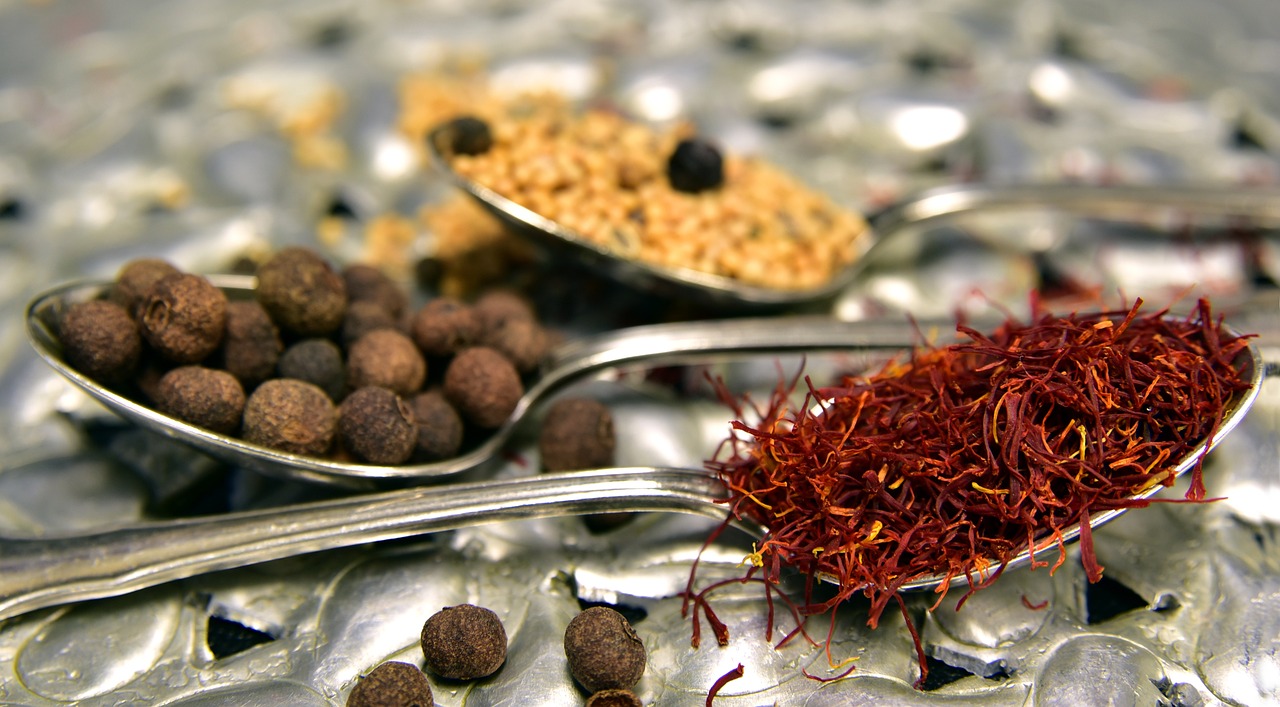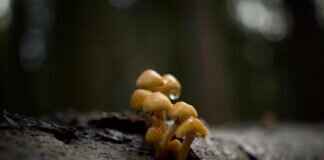This article provides a comprehensive guide on growing saffron at home, detailing cultivation techniques, harvesting methods, and essential tips for ensuring a successful saffron bloom.
Understanding Saffron: The World’s Most Expensive Spice
Saffron, derived from the flower of Crocus sativus, is celebrated not only for its distinctive flavor but also for its remarkable color and health benefits. Often referred to as the world’s most expensive spice, saffron’s high price tag stems from the labor-intensive process of harvesting its delicate threads. Each flower produces only three red stigmas, which must be handpicked during a short blooming period in autumn. This section will explore the factors that contribute to saffron’s high value, including its uses in culinary arts, traditional medicine, and its cultural significance across various regions.
Choosing the Right Location for Saffron Cultivation
When it comes to growing saffron, location is paramount. Saffron thrives in regions with full sunlight and well-drained soil. Ideally, the site should receive at least 6-8 hours of direct sunlight daily. The climate should be dry, with moderate temperatures ranging from 60°F to 70°F during the growing season. Areas with cold winters and hot, dry summers are perfect for saffron cultivation. Selecting a location that meets these criteria will significantly enhance the chances of a successful bloom.
Soil Requirements for Saffron
Soil quality plays a critical role in the health of saffron plants. The ideal soil for saffron is sandy loam with a pH level between 6 and 8. Good drainage is essential to prevent bulb rot. To improve soil quality, consider adding organic matter such as compost or well-rotted manure. Regularly testing soil pH can help maintain the optimal growing conditions for saffron.
Improving Soil Drainage
To enhance soil drainage, consider the following techniques:
- Incorporate organic matter to improve soil structure.
- Use raised beds to promote water runoff.
- Ensure proper spacing between bulbs to prevent overcrowding.
Testing Soil pH
Testing soil pH is vital for saffron health. You can use a simple pH test kit or send a sample to a laboratory. If the pH is too low, lime can be added to raise it. Conversely, sulfur can help lower high pH levels. Adjusting the pH will create a more favorable environment for saffron growth.
Sunlight and Temperature Needs
Saffron requires specific climatic conditions for optimal growth. The ideal temperature range is between 60°F and 70°F during the day. Nighttime temperatures should ideally drop to around 40°F to 50°F. Saffron plants need full sunlight to produce vibrant blooms and quality threads, making it essential to choose a planting site that receives adequate sunlight throughout the day.
Planting Saffron Bulbs: A Step-by-Step Guide
Planting saffron bulbs correctly is crucial for a successful harvest. The best time to plant saffron bulbs is in late summer or early fall, about 6 weeks before the first frost. When planting, ensure bulbs are spaced about 4-6 inches apart and planted 4-6 inches deep. This spacing allows for adequate air circulation and nutrient access.
Caring for Saffron Plants: Watering and Fertilization
Once planted, saffron requires ongoing care. Watering should be done sparingly; saffron is drought-tolerant and prefers dry conditions. Overwatering can lead to bulb rot. Fertilization is also essential; use a balanced fertilizer with a higher potassium content to encourage blooming. Apply fertilizer in early spring when plants begin to grow.
Harvesting Saffron: Best Practices for Quality Yield
Harvesting saffron at the right time is crucial for quality. The best time to harvest is early in the morning when flowers are fully open. Carefully pluck the red stigmas from each flower, ensuring minimal damage to the petals. For best results, harvest saffron within a few days of blooming.
Storing Saffron: Ensuring Longevity and Flavor
After harvesting, proper storage is essential to maintain saffron’s quality. Store saffron in an airtight container away from light, heat, and moisture. The ideal storage conditions are cool, dark places, which help preserve its flavor and potency for up to two years.

Understanding Saffron: The World’s Most Expensive Spice
Saffron, often referred to as the world’s most expensive spice, is derived from the flower of Crocus sativus, commonly known as the saffron crocus. This delicate, vibrant red stigma is what gives saffron its unique flavor and stunning color, making it a prized ingredient in culinary traditions around the globe. The labor-intensive process of harvesting saffron contributes significantly to its high price, as it takes approximately 150,000 flowers to produce just one kilogram of this exquisite spice.
- Origin and History: Saffron has a rich history that dates back over 3,000 years. It was first cultivated in ancient Persia and has since spread to various regions, including India, Spain, and Italy, each adding its own twist to its culinary applications.
- Culinary Uses: Renowned for its ability to enhance dishes, saffron is commonly used in risottos, paellas, and desserts. Its unique flavor profile, which is often described as earthy and slightly sweet, makes it a favorite among chefs.
- Health Benefits: Beyond its culinary appeal, saffron is also celebrated for its potential health benefits. It is rich in antioxidants and has been linked to improved mood, memory enhancement, and even potential anti-cancer properties.
The cultivation of saffron is a meticulous process. Each flower blooms only for a short period, typically in the fall, and the delicate stigmas must be hand-harvested at dawn to maintain their quality. This labor-intensive method is a key reason for saffron’s high cost.
Additionally, the climate and soil conditions required for saffron cultivation are quite specific. Saffron thrives in regions with well-drained, sandy soil and a climate that offers warm, dry summers and cooler winters. This makes it less accessible for widespread farming, further contributing to its rarity and value.
As a spice, saffron’s vibrant hue is not only visually appealing but also indicative of its quality. The more intense the color, the higher the quality of the saffron. When purchasing saffron, it’s essential to look for threads that are deep red in color, as this indicates they are pure and have not been adulterated with other substances.
In summary, saffron is not just a spice; it is a symbol of luxury and culinary excellence. Its unique flavor, historical significance, and health benefits make it a fascinating subject of study and a coveted ingredient in kitchens around the world. Understanding saffron’s value helps appreciate its role in the culinary arts, where it continues to enchant chefs and food enthusiasts alike.

Choosing the Right Location for Saffron Cultivation
Selecting an appropriate site is crucial for saffron growth. The success of saffron cultivation largely depends on understanding and meeting its specific environmental needs. In this section, we will explore the ideal conditions required for saffron to thrive, including sunlight, soil type, and climate, ensuring optimal bloom and yield.- Sunlight Requirements: Saffron requires a minimum of full sunlight exposure for at least 6 to 8 hours a day. This is essential for the bulbs to produce vibrant flowers and rich stigmas. Locations that receive direct sunlight without shading from trees or buildings are ideal.
- Soil Type: The best soil for saffron is well-drained, sandy, or loamy soil. It is important to avoid heavy clay soils that retain moisture, as saffron bulbs are susceptible to rot. A soil pH of around 6 to 8 is optimal, as it supports healthy growth.
- Climate Considerations: Saffron thrives in regions with a Mediterranean climate, characterized by hot, dry summers and cool winters. The bulbs require a period of dormancy during winter, making it vital to choose a location that experiences a distinct seasonal change.
When selecting a site, consider the drainage capabilities of the soil. Good drainage is critical to prevent waterlogging, which can harm the bulbs. If your chosen site has poor drainage, you might need to amend it by incorporating organic matter such as compost or well-rotted manure.
Another aspect to consider is the altitude. While saffron can be grown at various elevations, it generally prefers areas between 2,000 to 6,000 feet above sea level. This elevation range tends to provide a suitable temperature fluctuation, which is beneficial for bulb development.
In summary, choosing the right location for saffron cultivation involves a careful assessment of sunlight, soil type, and climate. By ensuring these conditions are met, you set the foundation for a successful saffron harvest. Remember, the right environment not only enhances growth but also maximizes the quality and yield of this precious spice.
Soil Requirements for Saffron
The quality of soil is a critical factor that directly influences the success of saffron cultivation. Saffron, derived from the Crocus sativus flower, thrives in specific soil conditions that support its growth and flowering. Understanding these requirements is essential for anyone looking to cultivate this precious spice.
Ideal Soil Types for Saffron
Saffron prefers well-drained, loamy soils that are rich in organic matter. The ideal soil texture should allow for good aeration and drainage, preventing waterlogging that can damage the bulbs. Sandy soils mixed with clay or silt can provide the right balance, ensuring that the roots have access to both nutrients and moisture without becoming oversaturated.
Optimal pH Levels
The pH level of the soil is another crucial aspect of saffron cultivation. Ideally, saffron thrives in slightly acidic to neutral soils, with a pH range of 6.0 to 7.0. If the soil is too acidic or alkaline, it can hinder nutrient absorption, leading to poor growth. Conducting a soil test is highly recommended to determine the pH level and make necessary amendments. Lime can be added to raise the pH, while sulfur can help lower it.
Drainage Considerations
Proper drainage is vital for saffron bulbs, as they are susceptible to rot in overly wet conditions. To enhance drainage, consider incorporating organic matter such as compost into the soil. This not only improves soil structure but also increases its ability to retain essential nutrients. Additionally, planting saffron in raised beds can facilitate better drainage and air circulation around the bulbs.
Soil Preparation Techniques
- Testing Soil Quality: Before planting saffron, test the soil for nutrient levels, pH, and texture. This will provide a baseline for necessary amendments.
- Amending Soil: Based on test results, amend the soil with organic matter, lime, or sulfur to create the ideal growing environment.
- Rotating Crops: Implement crop rotation practices to maintain soil health and prevent the build-up of pests and diseases.
Conclusion
In summary, understanding the soil requirements for saffron cultivation is essential for achieving a successful harvest. By ensuring optimal soil type, pH levels, and drainage conditions, growers can create a thriving environment for saffron production. Adopting best practices in soil preparation will not only enhance the quality of the saffron but also ensure a bountiful yield.
Improving Soil Drainage
Good drainage is essential for the health and productivity of saffron bulbs. Without proper drainage, the risk of bulb rot increases significantly, which can lead to poor growth and reduced yields. Here are some practical tips on how to enhance soil drainage effectively.
- Incorporate Organic Matter: Adding organic matter such as compost, well-rotted manure, or leaf mold can significantly improve soil structure. These materials help to create air pockets in the soil, allowing water to drain more effectively while also providing essential nutrients to the saffron plants.
- Use Raised Beds: Planting saffron bulbs in raised beds can be an effective strategy to improve drainage. Raised beds allow excess water to flow away from the bulbs, reducing the risk of waterlogging. Ensure that the beds are at least 12 inches high to facilitate adequate drainage.
- Choose Well-Draining Soil: The type of soil you use plays a crucial role in drainage. Sandy loam is often considered ideal for saffron cultivation due to its excellent drainage properties. If your soil is heavy clay, consider amending it with sand or perlite to improve drainage.
- Planting Techniques: When planting saffron bulbs, ensure they are placed at the right depth. Bulbs should be planted about 4 to 6 inches deep. This depth allows for proper root development while preventing the bulbs from sitting in water.
- Monitor Watering Practices: Overwatering is a common mistake that can lead to poor drainage conditions. It is important to water saffron bulbs only when necessary. Allow the top inch of soil to dry out before watering again, ensuring that the bulbs do not remain submerged in water.
- Install Drainage Systems: In areas prone to heavy rainfall or where the soil tends to retain moisture, consider installing a drainage system. French drains or perforated pipes can help redirect excess water away from the planting area, promoting better drainage.
By following these tips, you can create an environment that enhances soil drainage, which is vital for the successful cultivation of saffron. Remember that saffron thrives in conditions that mimic its native habitat, characterized by well-drained, nutrient-rich soils.
Testing Soil pH
Testing soil pH is a crucial step in ensuring the optimal health and productivity of saffron plants. Saffron, being a delicate and high-value crop, thrives in specific soil conditions. Understanding how to accurately test and amend soil pH can significantly impact your saffron yield and quality.
Why is Soil pH Important for Saffron?
The pH level of soil affects nutrient availability, microbial activity, and overall plant health. For saffron, the ideal soil pH ranges from 6.0 to 8.0. If the pH is too low (acidic), essential nutrients may become unavailable, leading to poor growth. Conversely, if the pH is too high (alkaline), it can also hinder the absorption of vital nutrients.
How to Test Soil pH
There are several methods to test soil pH:
- DIY Test Kits: These are widely available at garden centers and are user-friendly. They typically include pH test strips or a color chart to compare results.
- pH Meters: A more accurate option, digital pH meters provide a precise reading of soil pH. They require calibration but can yield reliable results.
- Laboratory Testing: For the most accurate results, sending a soil sample to a professional lab is recommended. They can provide detailed information about soil composition and amendments needed.
Steps to Test Soil pH
- Collect a soil sample from the saffron planting area, ideally from multiple spots to get an average reading.
- Remove any debris, such as roots or stones, and allow the sample to dry.
- Follow the instructions provided with your chosen testing method.
- Record the pH level and compare it to the ideal range for saffron.
Amending Soil pH
If your soil pH is outside the ideal range, amendments may be necessary:
- To Lower pH: Incorporate elemental sulfur or organic matter such as peat moss. These materials help acidify the soil over time.
- To Raise pH: Add lime, specifically dolomitic lime, which not only raises pH but also adds calcium and magnesium to the soil.
Best Practices for Soil pH Management
Regularly testing soil pH, ideally once a year, can help you maintain optimal conditions for saffron. Additionally, consider the following:
- Monitor rainfall and irrigation, as these can influence soil pH over time.
- Be cautious with fertilizers, as some can alter soil pH. Always follow recommended application rates.
- Incorporate organic matter into your soil to help buffer pH fluctuations and improve overall soil health.
By understanding and managing soil pH, you can create a thriving environment for saffron, ensuring robust growth and a bountiful harvest.
Sunlight and Temperature Needs
Saffron, known for its exquisite flavor and vibrant color, is a delicate spice that requires specific environmental conditions to thrive. Understanding the sunlight and temperature needs of saffron is crucial for anyone looking to cultivate this precious crop. This section will explore the ideal climate conditions necessary for optimal growth and flowering of saffron.
Saffron thrives in a temperature range of 15°C to 25°C (59°F to 77°F). These temperatures are ideal for both the growth phase and flowering period of the saffron plant. During the growing season, saffron bulbs require cool weather, particularly in the early stages of growth, which typically occurs in the fall. As the plants mature, they can tolerate slightly warmer temperatures, but extreme heat should be avoided.
Saffron requires a significant amount of sunlight to flourish. Ideally, the plants should receive at least 6 to 8 hours of direct sunlight daily. This exposure not only aids in photosynthesis but also contributes to the development of the vibrant red stigmas that saffron is known for. When selecting a location for saffron cultivation, ensure that the site is free from shading by trees or buildings that could obstruct sunlight.
Understanding seasonal changes is also vital for successful saffron cultivation. Saffron is typically planted in late summer or early autumn, allowing it to establish roots before the onset of winter. The bulbs then lie dormant during the cold months, which is essential for their life cycle. As spring approaches, the saffron plants will begin to emerge, requiring adequate sunlight and moderate temperatures to promote healthy growth.
Climate plays a significant role in saffron yield. Regions with dry summers and wet winters are particularly favorable for saffron cultivation. Excessive rainfall can lead to bulb rot, while insufficient moisture can stress the plants, affecting their growth and flowering. Therefore, maintaining the right balance of moisture and ensuring proper drainage is crucial.
- Choose a sunny location: Select a site that receives full sun exposure for most of the day.
- Monitor temperature: Use thermometers to keep track of temperature variations and protect saffron bulbs from extreme heat.
- Provide adequate drainage: Ensure the soil is well-draining to prevent water accumulation, which can be detrimental to saffron growth.
- Mulch during summer: Apply organic mulch to help retain soil moisture and regulate temperature during hot months.
In conclusion, understanding the of saffron is essential for successful cultivation. By providing the right conditions, growers can enhance the quality and yield of this valuable spice.

Planting Saffron Bulbs: A Step-by-Step Guide
Planting saffron bulbs correctly is essential for achieving a successful harvest. Saffron, derived from the Crocus sativus flower, is not only a valuable spice but also a rewarding plant to cultivate at home. This guide will provide you with detailed insights on when and how to plant saffron bulbs to ensure optimal growth and blooming.
When to Plant Saffron Bulbs
The timing of planting saffron bulbs can significantly influence their growth. Ideally, saffron bulbs should be planted in the early fall, approximately 4 to 6 weeks before the first frost. This timing allows the bulbs to establish roots before the winter sets in. In regions with milder winters, saffron can also be planted in late summer. It is crucial to monitor local climate conditions, as saffron thrives best in areas with a Mediterranean climate, characterized by hot, dry summers and cool, wet winters.
How to Plant Saffron Bulbs
Once you have determined the right time to plant, follow these steps for successful saffron bulb planting:
- Choose the Right Location: Select a sunny spot in your garden that receives at least 6 hours of direct sunlight daily. Ensure the area has well-draining soil to prevent bulb rot.
- Prepare the Soil: Loosen the soil to a depth of about 12 inches and mix in organic matter like compost to enhance fertility. Aim for a soil pH between 6 and 7.
- Spacing and Depth: Plant the saffron bulbs about 4 to 6 inches apart and 4 inches deep. This spacing allows adequate air circulation and prevents overcrowding.
- Watering: After planting, water the bulbs lightly to help settle the soil. Avoid overwatering, as saffron is susceptible to rot. Water only when the soil is dry.
- Mulching: Apply a layer of mulch to help retain moisture and suppress weeds. Organic mulch, such as straw or wood chips, works well.
After planting, it is essential to monitor the bulbs as they begin to sprout in the fall. Fertilization is typically not necessary during the initial planting, but a light application of a balanced fertilizer in early spring can promote healthy growth.
By following these steps, you will set the foundation for a thriving saffron garden. Remember, patience is key, as saffron bulbs may take a year to establish fully and produce flowers. With proper care and attention, your saffron bulbs can flourish, leading to a bountiful harvest of this exquisite spice.
When to Plant Saffron Bulbs
Timing is a critical factor in the successful cultivation of saffron, the world’s most expensive spice. Understanding the optimal planting times can significantly enhance the growth potential and yield of saffron bulbs. This section will explore the best planting times based on various climatic conditions, ensuring that you can maximize your saffron harvest.
- Climate Considerations: Saffron thrives in regions with a Mediterranean climate, characterized by hot, dry summers and cool, wet winters. In these areas, the ideal time to plant saffron bulbs is in the late summer to early fall, typically between August and September. This timing allows the bulbs to establish roots before the onset of winter.
- Cold Climates: For regions with colder climates, it is advisable to plant saffron bulbs in early spring, around March to April, once the danger of frost has passed. This approach helps the bulbs to grow during the warmer months and prepares them for flowering in the fall.
- Hot Climates: In hotter regions, planting should occur in the fall, ideally around September to October. This timing takes advantage of the cooler temperatures and allows the bulbs to develop roots before the heat of summer arrives.
Soil Temperature and Moisture LevelsThe soil temperature plays a vital role in the successful growth of saffron. Ideally, the soil temperature should be between 15°C to 20°C (59°F to 68°F) at the time of planting. Additionally, ensuring adequate soil moisture is crucial. The soil should be moist but not waterlogged, as saffron bulbs are sensitive to excess water.
Preparing for PlantingPrior to planting, it is essential to prepare the soil adequately. This includes testing the soil pH, which should ideally be between 6 and 8, and enhancing drainage if necessary. Adding organic matter can improve soil structure, ensuring that the saffron bulbs have the best possible environment for growth.
Spacing and DepthWhen planting saffron bulbs, ensure that they are spaced about 10 to 15 centimeters apart to allow adequate airflow and prevent overcrowding. The bulbs should be planted at a depth of approximately 10 to 15 centimeters, which helps protect them from temperature fluctuations and ensures they receive sufficient nutrients.
In summary, understanding the timing of saffron bulb planting based on climate conditions is essential for maximizing growth potential. By considering factors such as soil temperature, moisture levels, and proper planting techniques, you can set the stage for a bountiful saffron harvest.
How to Plant Saffron Bulbs
Planting saffron bulbs is a crucial step in cultivating this prized spice. Proper techniques can significantly influence the health and yield of your saffron plants. Below is a comprehensive guide that covers the essential aspects of planting saffron bulbs, including spacing, depth, and care tips.
Step 1: Choosing the Right TimeTiming is everything when it comes to planting saffron bulbs. The best time to plant them is in late summer to early fall, ideally between August and September. This timing allows the bulbs to establish roots before the winter months, leading to a more robust growth when spring arrives.
Step 2: Preparing the SoilBefore planting, ensure that the soil is well-drained and rich in nutrients. Saffron prefers sandy or loamy soil with a pH level between 6 and 8. To improve drainage, consider mixing in organic matter or well-rotted compost. This will not only enhance soil structure but also provide essential nutrients for the bulbs.
Step 3: Planting Depth and SpacingWhen planting saffron bulbs, the ideal depth is about 4 to 6 inches. This depth protects the bulbs from extreme temperature fluctuations and promotes healthy growth. As for spacing, place bulbs approximately 6 to 8 inches apart. This spacing allows enough room for the plants to grow without competing for nutrients.
Step 4: Watering After PlantingAfter planting, water the bulbs lightly to help settle the soil around them. It’s crucial not to overwater, as saffron bulbs are susceptible to rot in overly moist conditions. A light watering is typically sufficient until the plants start to emerge.
Step 5: Mulching for ProtectionApplying a layer of mulch can help retain moisture and regulate soil temperature. Organic mulch, such as straw or shredded leaves, is ideal as it breaks down over time, enriching the soil. Additionally, mulch can protect the bulbs from extreme weather conditions and suppress weeds.
Step 6: Ongoing CareOnce planted, saffron bulbs require minimal care. Monitor the soil moisture and ensure it remains consistently moist but not soggy. Fertilization is also essential; consider using a balanced fertilizer during the growing season to promote healthy foliage and flower development.
Step 7: Watching for GrowthAs the saffron plants begin to grow, you’ll notice green shoots emerging in the fall. These will eventually produce beautiful purple flowers in the spring. Be patient, as saffron blooms typically appear in October or November, depending on your climate.
In summary, planting saffron bulbs involves careful timing, soil preparation, proper depth and spacing, and ongoing care. By following these steps, you can create a thriving saffron garden that yields this exquisite spice for years to come.

Caring for Saffron Plants: Watering and Fertilization
Ongoing care is essential for thriving saffron plants. Proper watering and fertilization are critical components that directly influence the health and productivity of saffron. This section delves into the specific needs of saffron regarding these two vital aspects, ensuring that your plants flourish and produce the coveted saffron threads.
Saffron, being a Mediterranean plant, has unique watering requirements. It thrives in well-drained soil, which means that overwatering can lead to bulb rot and other diseases. Here are some key points to consider:
- Frequency: Water saffron plants deeply but infrequently. A good rule of thumb is to water every 2-3 weeks, depending on rainfall and temperature.
- Soil Moisture: Before watering, check the soil moisture by digging a small hole. If the soil is dry 2-3 inches below the surface, it’s time to water.
- Watering Method: Use a drip irrigation system or a soaker hose to deliver water directly to the roots, minimizing water on the foliage.
It’s crucial to adjust your watering schedule based on the season. During the growing season, saffron requires more water, while in the dormant phase, reduce watering significantly.
Fertilization is another key aspect of saffron care. The right nutrients can enhance bulb development and flowering. Here’s how to effectively fertilize your saffron plants:
- Soil Testing: Before applying any fertilizers, conduct a soil test to determine nutrient levels and pH. This will help you choose the right type of fertilizer.
- Organic Options: Consider using organic fertilizers such as compost, well-rotted manure, or bone meal. These improve soil structure and provide slow-releasing nutrients.
- Timing: Apply fertilizers in early spring before the growing season begins and again after the flowering period to support bulb development.
Be cautious with synthetic fertilizers; excessive nitrogen can lead to lush foliage at the expense of flower production. A balanced fertilizer with equal parts nitrogen, phosphorus, and potassium is often recommended.
In summary, caring for saffron plants through proper watering and fertilization is paramount for achieving healthy growth and abundant blooms. By understanding the specific needs of saffron and implementing these best practices, you can significantly enhance your saffron cultivation experience.
Watering Techniques for Saffron
Saffron, known as the world’s most expensive spice, requires meticulous care, particularly in its watering practices. Proper watering is essential to ensure that saffron plants thrive, avoiding the pitfalls of both over-watering and under-watering. This section will delve into the specifics of how much and how often to water saffron to promote healthy growth.
- Understanding Saffron’s Water Needs: Saffron plants are native to arid regions and are well-adapted to dry conditions. They prefer well-drained soil and do not thrive in waterlogged environments. The key is to provide sufficient moisture during the growth phase while allowing the soil to dry out between watering sessions.
- Watering Frequency: During the growing season, typically from September to November, saffron requires consistent moisture. Watering should be done every 7 to 10 days, depending on rainfall and soil moisture levels. It’s crucial to monitor the weather and adjust your watering schedule accordingly.
- Watering Amount: When watering saffron, it’s essential to provide enough water to reach the root zone without saturating the soil. A general guideline is to apply approximately 1 to 2 inches of water per week. This can be achieved through rainfall or supplemental irrigation.
Techniques for Effective Watering
To ensure that saffron plants receive the right amount of moisture, consider the following techniques:
- Drip Irrigation: This method delivers water directly to the plant’s root zone, minimizing evaporation and runoff. It’s particularly effective in maintaining consistent soil moisture without over-saturating the bulbs.
- Soaker Hoses: Similar to drip irrigation, soaker hoses allow water to seep slowly into the soil. This method is beneficial for larger saffron plots, ensuring even distribution of moisture.
- Hand Watering: For smaller gardens, hand watering can be effective. Use a watering can or hose with a spray nozzle to control the flow and ensure that water penetrates the soil without pooling.
Signs of Over-Watering and Under-Watering
Recognizing the signs of improper watering is crucial for maintaining healthy saffron plants:
- Over-Watering: Symptoms include yellowing leaves, wilting, and root rot. If the soil remains consistently wet, it may lead to bulb decay, significantly impacting the plant’s health.
- Under-Watering: Plants may exhibit signs of stress, such as drooping leaves and stunted growth. In severe cases, the bulbs may dry out and die, leading to a poor harvest.
In conclusion, mastering the art of watering saffron is vital for any aspiring saffron grower. By understanding the specific watering needs of saffron plants and implementing effective techniques, you can foster a thriving saffron garden. Remember to monitor your plants regularly and adjust your watering practices based on environmental conditions to achieve the best results.
Fertilizing Saffron Plants
Fertilization is a crucial aspect of saffron cultivation that can significantly influence the health and yield of the plants. Understanding the types of fertilizers suitable for saffron and the optimal timing for their application is essential for any saffron grower.
When it comes to fertilizing saffron, there are several types of fertilizers that can be beneficial:
- Organic Fertilizers: These include well-rotted manure, compost, and bone meal. Organic fertilizers improve soil structure and provide essential nutrients over time.
- Inorganic Fertilizers: Synthetic fertilizers such as NPK (Nitrogen, Phosphorus, Potassium) can be used for a quick nutrient boost. A balanced NPK ratio, such as 10-10-10, is often recommended.
- Micronutrient Supplements: Saffron may also benefit from micronutrients like magnesium, calcium, and iron, which can be added based on soil tests.
Timing is everything when it comes to fertilizing saffron:
- Pre-Planting: Before planting saffron bulbs, it’s advisable to enrich the soil with organic matter. This creates a nutrient-rich environment for the bulbs to establish.
- During Growth: A light application of nitrogen-rich fertilizer can be beneficial during the growing season, particularly in early spring when the plants begin to sprout.
- Post-Flowering: After the saffron flowers have bloomed, applying a balanced fertilizer can help replenish nutrients in the soil, preparing it for the next growing cycle.
How you apply fertilizers can also impact their effectiveness:
- Broadcasting: Spread the fertilizer evenly across the soil surface and lightly incorporate it into the topsoil.
- Side-Dressing: Apply fertilizers in bands alongside the plants, ensuring that they are not in direct contact with the bulbs.
- Liquid Fertilizers: Dilute liquid fertilizers and apply them during watering to ensure that nutrients are absorbed efficiently.
In conclusion, proper fertilization practices are vital for the successful cultivation of saffron. By selecting the right type of fertilizer and applying it at the appropriate times, growers can enhance the health and yield of their saffron plants, leading to a more fruitful harvest.

Harvesting Saffron: Best Practices for Quality Yield
Harvesting saffron at the right time is crucial for ensuring the highest quality of this exquisite spice. Saffron, derived from the stigma of the Crocus sativus flower, is renowned for its vibrant color and unique flavor. To maximize the flavor and potency of saffron, it is essential to follow best practices during the harvesting process. This section outlines key techniques and tips for harvesting saffron threads effectively.
The timing of the saffron harvest can significantly impact the quality of the threads. Saffron flowers typically bloom in the fall, and the ideal time to harvest is early in the morning when the flowers are fully open. Look for flowers that have just begun to bloom, as this is when the stigmas are at their most potent. Harvesting should be done within a few hours of blooming to ensure that the threads retain their flavor and aroma.
To collect saffron threads without damaging the flowers, it is important to use proper harvesting techniques. Here are some best practices:
- Use clean, sharp scissors or tweezers: This helps prevent contamination and ensures a clean cut.
- Gently pinch the flower: Hold the flower firmly to avoid crushing it while you cut the stigmas.
- Harvest only the red stigmas: Each flower typically produces three red stigmas. Carefully remove them without pulling on the flower itself.
- Work quickly but carefully: Saffron threads are delicate and can be easily damaged, so aim to harvest the flowers quickly while still being gentle.
Once harvested, saffron threads need to be handled with care to maintain their quality. Here are a few tips:
- Dry the saffron threads: Spread the threads out in a single layer on a clean, dry surface away from direct sunlight. This helps to preserve their flavor and potency.
- Store in airtight containers: Once dried, store saffron in a cool, dark place in airtight containers to prevent exposure to moisture and light.
- Label and date: Proper labeling can help track the age of your saffron, ensuring you use the freshest threads first.
By following these best practices for harvesting saffron, you can ensure a high-quality yield that maximizes flavor and potency. The careful attention to timing and technique not only enhances the quality of your saffron but also contributes to a more rewarding cultivation experience. Remember, the effort invested in harvesting saffron correctly will pay off in the kitchen, where its unique flavor can elevate any dish.
Identifying the Right Time to Harvest
Harvesting saffron at the right time is critical for ensuring the highest quality of this precious spice. The timing of your saffron harvest can greatly influence the flavor, aroma, and overall potency of the saffron threads. In this section, we will explore how to identify the optimal moment for harvesting saffron flowers, ensuring a successful yield.
Understanding the Saffron Bloom Cycle
Saffron crocus flowers typically bloom in the autumn months, and the timing can vary based on geographical location and climate. Generally, saffron flowers begin to appear around late September to early November. The flowers bloom for a short period, usually lasting only a few weeks. Therefore, it is essential to monitor your saffron plants closely during this time.
Signs of Flower Maturity
- Color Change: The saffron flowers will exhibit a vibrant purple hue when they are ready for harvest. The petals will open fully, revealing the vivid red stigmas inside.
- Petal Condition: Look for flowers with intact petals that are not wilting or browning. Healthy petals indicate that the flower is at its peak.
- Time of Day: The best time to harvest saffron is early in the morning when the flowers are fully open but before the sun becomes too strong. This helps to preserve the delicate nature of the saffron threads.
Optimal Harvesting Timeframe
To achieve the best quality saffron, it is crucial to harvest the flowers within 24 hours of blooming. Once the flowers open, they should be harvested as soon as possible to prevent any loss in quality. Delaying the harvest can lead to the stigmas drying out or being damaged by weather conditions, which can negatively affect the flavor and potency of the saffron.
Harvesting Techniques
When you are ready to harvest, use a pair of sterilized scissors or tweezers to carefully pluck the red stigmas from the flower. Aim to collect only the three red threads from each flower, as this is what constitutes saffron. Avoiding damage to the flower itself is crucial, as it can continue to produce additional blooms in subsequent seasons.
Post-Harvest Care
Once harvested, saffron threads should be dried immediately to preserve their quality. Lay them out in a single layer on a clean, dry surface away from direct sunlight. Proper drying enhances the flavor and aroma, ensuring that your saffron retains its valuable properties.
In summary, identifying the right time to harvest saffron involves careful observation of the blooms and understanding the ideal conditions for harvest. By paying attention to the signs of maturity and employing proper harvesting techniques, you can ensure that your saffron is of the highest quality.
Harvesting Techniques for Saffron Threads
Harvesting saffron is a delicate process that requires precision and care to maintain the quality of the threads. Saffron, derived from the flower of Crocus sativus, is not only valued for its culinary uses but also for its medicinal properties. The following guide outlines the essential techniques for harvesting saffron threads effectively, ensuring that the flowers remain undamaged and the threads retain their integrity.
- Timing the Harvest: The first step in harvesting saffron is to identify the right time. Saffron flowers bloom in the fall, and the best time to harvest is early in the morning when the flowers are fully open. This is typically within a week of blooming. Collecting the flowers at this time ensures that the threads are rich in flavor and color.
- Gathering Tools: Before starting the harvest, gather the necessary tools. A pair of sharp scissors or small shears is ideal for cutting the flowers without damaging the plant. It is also advisable to have a small basket or container to collect the flowers as you harvest.
- Harvesting Technique: When harvesting saffron, gently grasp the flower by its base and cut just above the stem. This method minimizes damage to the plant and allows for the possibility of future blooms. Be careful to avoid crushing the petals, as this can lead to a loss of quality in the threads.
- Collecting the Threads: After harvesting the flowers, the next step is to extract the saffron threads. Each flower produces three crimson stigmas, which are the saffron threads. Carefully pluck the threads from the flower, ensuring that you handle them gently to avoid bruising. Place the collected threads in a separate container to keep them safe.
- Drying the Threads: Once harvested, saffron threads need to be dried properly to preserve their flavor and aroma. Spread the threads out on a clean, dry surface in a well-ventilated area away from direct sunlight. Allow them to dry for about 2-3 days until they are crisp to the touch. Proper drying is crucial as it prevents mold and ensures the longevity of the saffron.
By following these harvesting techniques, you can ensure that your saffron threads are of the highest quality. Remember that patience and care are key components in the harvesting process. With practice, you will become more skilled at collecting saffron, allowing you to enjoy this exquisite spice in your culinary endeavors.

Storing Saffron: Ensuring Longevity and Flavor
Once harvested, proper storage is essential to maintain saffron’s quality. The unique properties of saffron, including its aroma, color, and flavor, can degrade if not stored correctly. This section details the best methods for storing saffron to preserve its flavor and potency.
Saffron requires specific storage conditions to maintain its quality. The ideal environment for saffron storage includes:
- Temperature: Store saffron in a cool, dry place, ideally between 15-20°C (59-68°F). Avoid areas with fluctuating temperatures.
- Humidity: Low humidity is crucial. High humidity can lead to mold growth, which can ruin saffron. Aim for a humidity level below 60%.
- Light: Exposure to light can degrade saffron’s vibrant color and flavor. Use opaque containers to block light.
Maintaining saffron’s quality over time is key. Here are some effective methods:
1. Use Airtight Containers: Glass or ceramic jars with airtight seals are ideal. Avoid plastic containers as they can retain moisture.2. Keep Away from Strong Odors: Saffron can absorb odors from its environment. Store it away from spices and strong-smelling foods.3. Consider Vacuum Sealing: For long-term storage, vacuum sealing can help eliminate air exposure, preserving saffron's potency.
If you plan to store saffron for an extended period, consider these additional tips:
- Freeze Saffron: For long-term preservation, saffron can be frozen. Place it in a vacuum-sealed bag to prevent moisture and odors from affecting it.
- Regular Checks: Periodically check your saffron for any signs of moisture or spoilage. Discard any compromised threads immediately.
- Label Containers: Always label your storage containers with the date of harvest. This helps you keep track of freshness.
By following these best practices for storing saffron, you can ensure that this precious spice retains its unique qualities and continues to enhance your culinary creations for months to come. Proper storage not only protects your investment but also guarantees that you can enjoy the rich flavors and aromas saffron has to offer.
Best Storage Conditions for Saffron
Saffron, known for its rich flavor and vibrant hue, is a precious spice that requires careful handling and storage to maintain its quality. Proper storage conditions are essential to preserve saffron’s unique properties, including its aroma, color, and taste. This section outlines the ideal temperature, humidity, and light conditions necessary for effective saffron storage.
Optimal Temperature for Storing Saffron
The ideal temperature for saffron storage is between 20°C to 25°C (68°F to 77°F). Storing saffron at this temperature range helps to prevent degradation of its active compounds. It is important to avoid fluctuations in temperature, as extreme heat can lead to the loss of flavor and potency. A consistent, cool environment will help to maintain saffron’s quality over time.
Humidity Levels for Saffron Storage
Humidity plays a crucial role in saffron preservation. The recommended humidity level for saffron storage is around 30% to 40%. High humidity can lead to mold growth and spoilage, while low humidity can cause saffron to dry out and lose its flavor. Using a dehumidifier or silica gel packets can help regulate moisture levels in the storage area.
Light Conditions for Saffron Storage
Exposure to light can significantly impact saffron’s quality. It is vital to store saffron in a dark place or in opaque containers that block light. Direct sunlight can cause the saffron to fade and lose its vibrant color, diminishing its culinary value. Ideally, saffron should be kept in airtight containers, such as glass jars or vacuum-sealed bags, to protect it from light and air exposure.
Recommended Storage Containers
- Glass Jars: Airtight glass containers are excellent for preserving saffron’s quality while allowing visibility.
- Vacuum-Sealed Bags: These bags help eliminate air, reducing oxidation and maintaining the spice’s potency.
- Opaque Tins: Metal tins that block light can also serve as effective storage options.
Additional Tips for Saffron Storage
- Always label containers with the date of storage to track freshness.- Avoid storing saffron near strong-smelling substances, as it can absorb odors.- Check saffron periodically for any signs of spoilage, such as discoloration or mold.
By adhering to these storage guidelines, you can ensure that your saffron remains flavorful and aromatic for an extended period. Proper storage not only enhances the longevity of saffron but also preserves its unique characteristics, allowing you to enjoy this exquisite spice in your culinary creations.
How to Preserve Saffron Quality
Preserving the quality of saffron is essential for maintaining its unique flavor, aroma, and vibrant color. This precious spice, known for its culinary and medicinal properties, requires careful handling and storage to ensure it remains potent over time. Here, we will explore various methods to effectively preserve saffron, ensuring that it retains its best qualities for your culinary needs.
- Optimal Storage Conditions: Saffron should be stored in a cool, dry place away from direct sunlight. The ideal temperature for saffron storage is between 15°C to 20°C (59°F to 68°F). High humidity can cause saffron to lose its potency, so it’s crucial to keep it in a moisture-free environment.
- Use of Airtight Containers: To protect saffron from air and moisture, store it in airtight containers. Glass jars with tight seals or vacuum-sealed bags are excellent options. Avoid using plastic containers, as they can retain moisture and impart unwanted odors.
- Light Protection: Exposure to light can degrade saffron’s quality over time. It is advisable to store saffron in dark containers or in a dark place to minimize light exposure, which helps maintain its vibrant color and essential oils.
- Freezing for Long-Term Storage: For long-term preservation, saffron can be frozen. Place saffron threads in a sealed bag, removing as much air as possible before freezing. This method can extend its shelf life significantly, but be sure to thaw it at room temperature before use to avoid moisture accumulation.
- Regular Quality Checks: Periodically check your stored saffron for any signs of degradation such as fading color or loss of aroma. Fresh saffron should have a strong, distinct smell and a rich red hue. If you notice any changes, it may be time to replace it.
Conclusion
By following these preservation methods, you can ensure that your saffron retains its quality and remains a valuable ingredient in your kitchen. Proper storage not only enhances the longevity of saffron but also ensures that you can enjoy its unique flavor and aroma for many culinary adventures ahead.
Frequently Asked Questions
- What is saffron and why is it so expensive?
Saffron is the dried stigma of the Crocus sativus flower, and it’s known as the world’s most expensive spice due to the labor-intensive process of harvesting. It takes about 150,000 flowers to produce just one kilogram of saffron, making it a precious commodity.
- What are the ideal growing conditions for saffron?
Saffron thrives in well-drained soil with a pH of 6 to 8, plenty of sunlight, and a climate that has hot, dry summers and cool winters. Ensuring these conditions will help your saffron bulbs flourish.
- When should I plant saffron bulbs?
The best time to plant saffron bulbs is in late summer to early fall. This timing allows the bulbs to establish roots before the colder months and ensures vibrant blooms in the fall.
- How often should I water saffron plants?
Saffron plants require moderate watering. It’s essential to keep the soil moist but not waterlogged. Generally, watering every two to three weeks should suffice, depending on your climate.
- What is the best way to harvest saffron?
To harvest saffron, pick the flowers early in the morning when they bloom, and carefully pluck the red stigmas. Be gentle to avoid damaging the flowers, as this can affect future yields.
- How should I store saffron to maintain its quality?
Store saffron in an airtight container in a cool, dark place. Avoid exposure to light and moisture, which can degrade its flavor and color over time.














